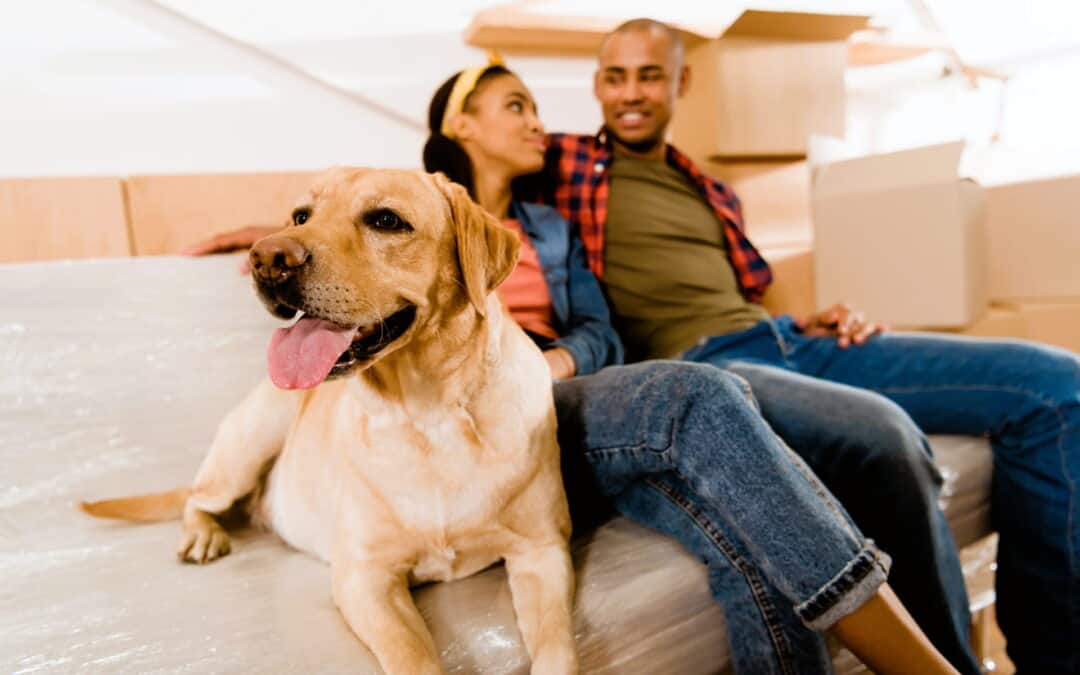When planning a move, ensuring the happiness and safety of your furry friends is just as crucial as managing the logistics of boxes and furniture. This guide aims to help pet owners navigate the complexities of moving with pets. You’ll find practical tips on selecting the right moving company, preparing your pets, and settling into your new home, ensuring your pets remain stress-free throughout the process.
Selecting a Pet-Friendly Moving Company
Choosing a moving company that understands the needs of pets can significantly reduce the stress associated with moving. Look for companies that offer specific accommodations for animals or have experience handling pets. An example is a company that provides climate-controlled transport or schedules frequent stops for pets during long-distance moves, demonstrating their commitment to your pet’s comfort and safety.
- Check if the company is licensed and insured for transporting pets.
- Ask about their previous experiences with moving pets.
- Inquire about the specific measures they take to ensure pet safety.
How to Prepare Your Pet for Moving
Preparation is key when it comes to moving with pets. Start by gradually acclimating your pet to their travel crate or carrier well before the moving day, which can help minimize anxiety. Ensure their routine is as consistent as possible in the days leading up to the move, as routine helps keep pets calm.
- Introduce the carrier as a safe space by placing treats and favorite toys inside.
- Keep feeding and walk times consistent.
- Consider a vet visit for a check-up and to discuss travel anxiety solutions.
Packing Your Pet’s Essentials
Your pet’s belongings should be packed in a way that ensures they are easily accessible. Pack a separate bag with essentials like food, water, toys, and any medications they might need. This will make the transition smoother and keep your pet comfortable and entertained during the move.
- Pack at least one week’s worth of food and water to avoid stomach upsets from new food brands.
- Include familiar toys to help comfort your pet.
- Keep important documents like vaccination records and registration easily accessible.
Travel Tips for Pets on Moving Day
Moving day can be particularly chaotic, so it’s important to keep your pets safe and secure. Whether traveling by car or plane, make sure your pet has a comfortable space. If you’re driving, plan for regular stops to let your pet stretch and relieve themselves.
- Secure the pet carrier in the vehicle to prevent it from shifting.
- Cover the carrier with a light blanket to reduce stress from the environment.
- Plan your travel route with pet-friendly stops.
Helping Pets Adjust to a New Home
Once you arrive at your new home, it’s important to help your pets adjust to their new surroundings. Set up a familiar space for them right away with their favorite bed, toys, and other items. Spend extra time with them to help ease their anxiety and explore the new environment together.
- Maintain old routines for feeding and walks to provide consistency.
- Gradually introduce your pet to different areas of the new home.
- Monitor their behavior closely for signs of stress or anxiety.
After the Move: Continuing Care for Your Pets
After settling in, it’s important to take additional steps to ensure your pet’s well-being. Update their microchip and tags with your new address and contact information. Find a new veterinarian and schedule a visit to establish care and address any concerns that might have arisen from the move.
- Update your pet’s microchip information.
- Locate a reputable veterinarian in your new area.
- Continue to monitor your pet’s adjustment period closely.
Key Takeaways for Moving Successfully with Pets
Ensuring the well-being of your pets during a move requires careful planning and consideration. From choosing a pet-friendly moving company to helping your pets adjust to a new home, every step is crucial for a smooth transition. Remember, keeping routines consistent and providing comfort are key to helping your pets through this significant change.
Frequently Asked Questions
1. How long does it take for a pet to adjust to a new home? Pets vary, but most can begin to feel comfortable in their new surroundings within a few weeks. Providing familiarity and consistency can help speed this process.
2. Are there pet sedatives available for moving day? Yes, talk to your veterinarian about whether a sedative is appropriate for your pet’s travel anxiety.
3. What is the best way to transport multiple pets at once? Using individual carriers for each pet ensures safety and comfort. If they have to be in the same carrier, ensure it’s spacious enough for them to be comfortable.
4. How often should I stop when driving long distances with my pet? Stopping every 2-3 hours allows your pet to use the restroom and drink water, helping to alleviate stress.
5. Can pets sense when they are moving to a new home? Pets might not understand the concept of moving, but they can detect changes in their environment and routines, which might cause them anxiety.
By taking these steps and precautions, you can help ensure that your move is as stress-free as possible for your furry friends.
- About the Author
- Latest Posts
Founded in 2020 in response to the needs arising from the Covid-19 pandemic, Pack Dat & Geaux Movers LLC has quickly established itself as a trusted moving service in Slidell and surrounding areas. With a focus on professionalism and respect for diverse backgrounds, our team offers a wide range of services, from residential and commercial moves to packing and labor-only options, all executed with meticulous attention to detail.












